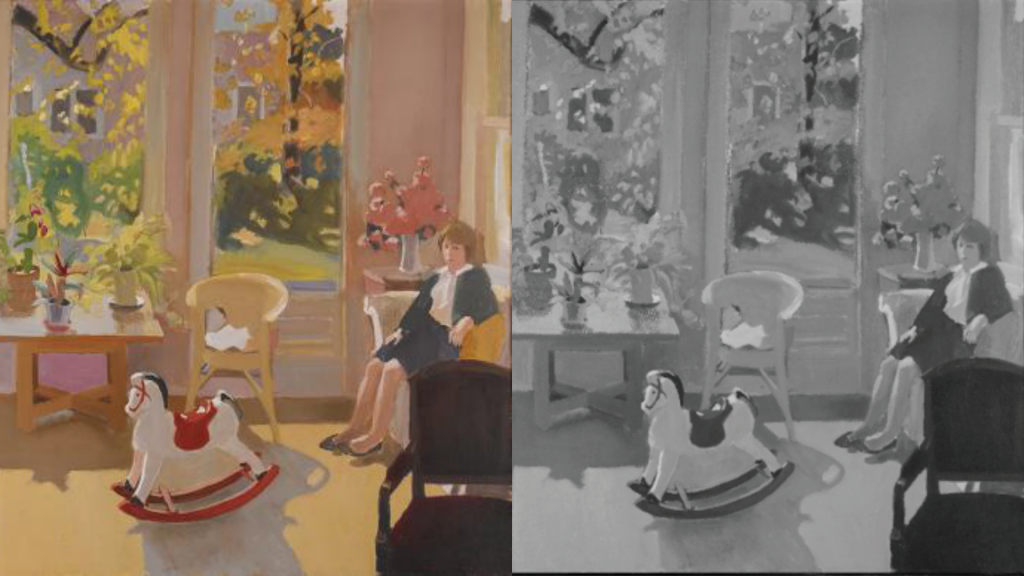Have you ever wondered what it’s like to experience art with color blindness? It’s a common condition that even many artists have, including Peter Milton and children’s book illustrator Loren Long. We’d like to take a moment to raise awareness about different forms of color blindness, how it can affect viewing a work of art, and tools that people with color blindness can use to experience art in a new way.
What is color blindness?
Color blindness, also called color vision deficiency (CVD), encompasses a range of causes and conditions and is actually quite complex. Usually when people talk about color blindness, they are referring to the most common forms of red-green color blindness, which are genetic conditions, inherited by men and women, caused by a recessive gene on the X-chromosome.
There are different forms of color blindness. Red-green color blindness can be broken down into two main types: Protan (“pro-tan”), which relates to seeing red colors, and Deutan (“do-tan”), which relates to seeing green colors. Additionally, there is blue-yellow color blindness, called Tritanomaly/Tritanopia, and conditions called achromatopsia and monochromacy.
October Interior by Fairfield Porter
Take the image below as an example. October Interior is set in the sunroom of Porter’s home in Southampton, Long Island. His older daughter, Katie, sits at right, turning outward to watch the artist work, while in the left background, across the narrow lawn, his younger daughter, Liz, plays by the swing set. In the center of the room between two patio chairs is a low square table topped with potted plants, and before it a child’s rocking horse.
In its exploration of interior and exterior realities, Porter’s painting is laden with references to domesticity, family relationships, and the passing of time. October Interior is firmly rooted in place, alive in its expressive rendering of space, color, and light.

Fairfield Porter, 1907–1975, October Interior, 1963, Oil on canvas.
Now, here’s what this image might look like with different forms of color blindness:
Color blindness effects on Fairfield Porter’s October Interior

Protanomaly (red-weak)

Deuteranomaly (green-weak)

Tritanomaly (blue-weak)

Tritanopia (blue-blind)

Achromatopsia (total color blindness)

Blue Cone Monochromacy (partial cone dysfunction)
Everyone sees the world differently, but it’s important to be mindful of those differences and to encourage those who might see color in a different way, especially young people who might be self-conscious, to explore art and nature.
Color blind aids for art

EnChroma glasses: Last year, Crystal Bridges recently received 60 pairs of color blind glasses thanks to funding from a sponsor in an effort to increase museum accessibility for our guests who are color blind. When the museum reopens, we encourage you to try out these glasses in the galleries (available for free check-out) and see art in a whole new way.
*Please keep in mind that there are several forms of color blindness. We cannot guarantee that the glasses will have the same effect or provide the same experience for every guest.
Take advantage of color blind apps: There are also several apps available that help identify colors for those who have color blindness. Apps like Color Blind Pal can help identify colors by touching them in photos or images on your phone. Consider looking at Crystal Bridges artworks virtually via eMuseum and using a color blind app to identify colors.
Accessibility programming is supported in part by Arkansas Blue Cross and Blue Shield, Neff and Scarlett Basore, Loreen Arbus, Starling Family Charitable Foundation, and Pinnacle Car Services.




